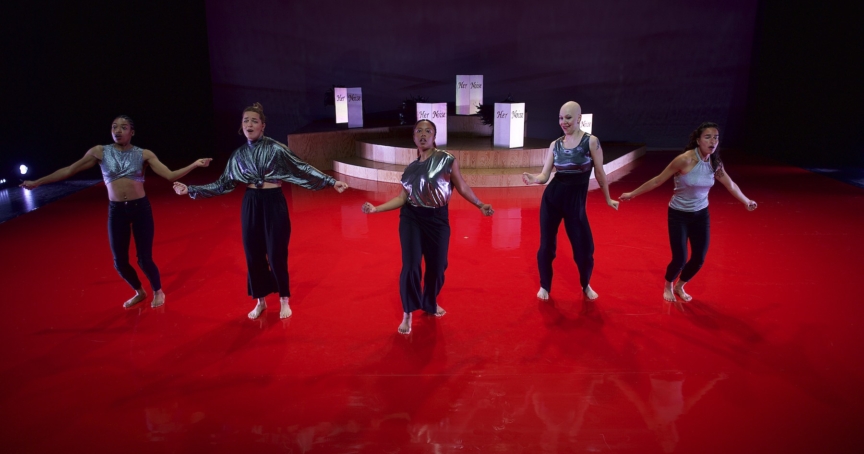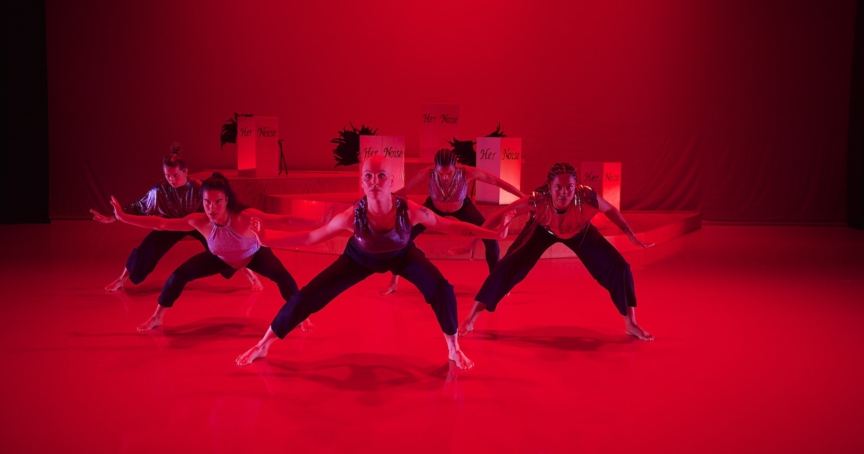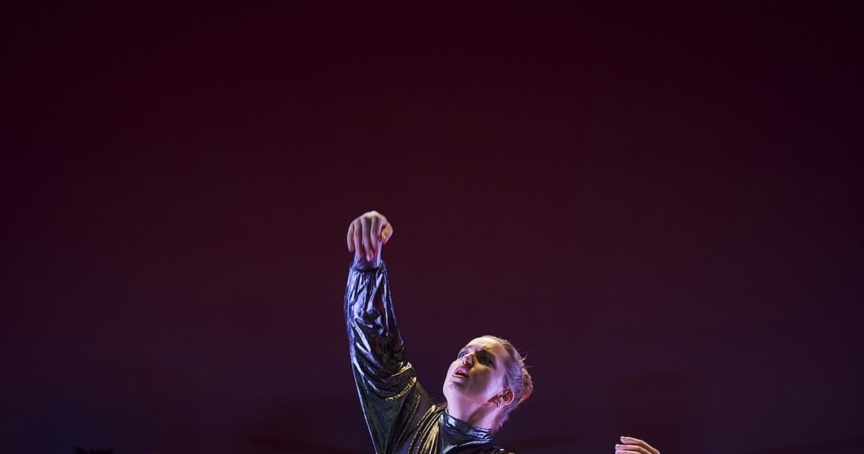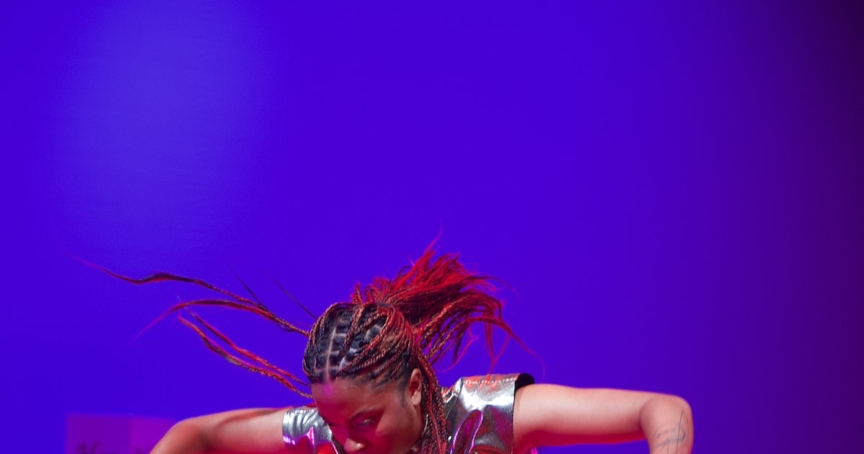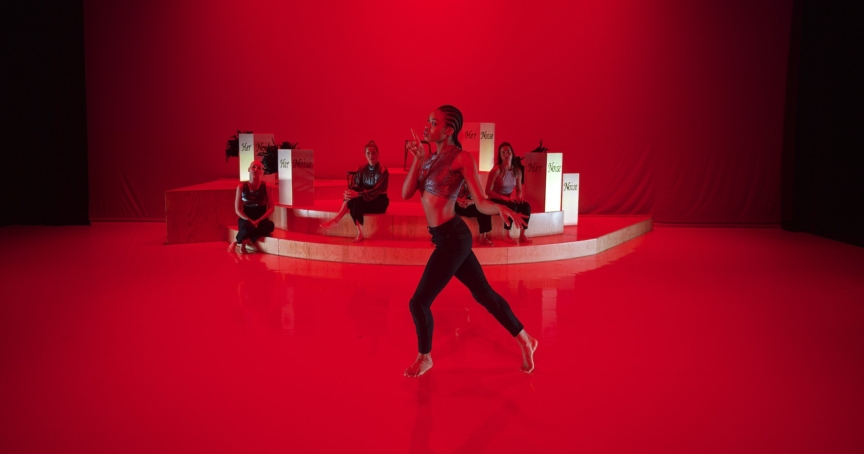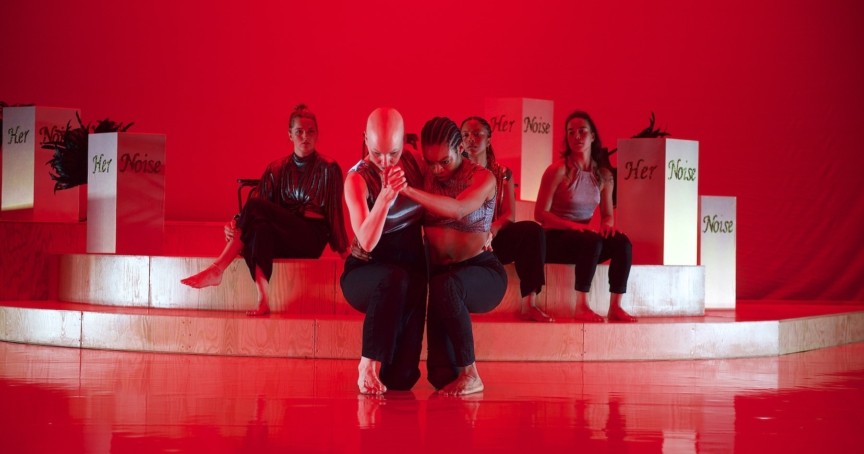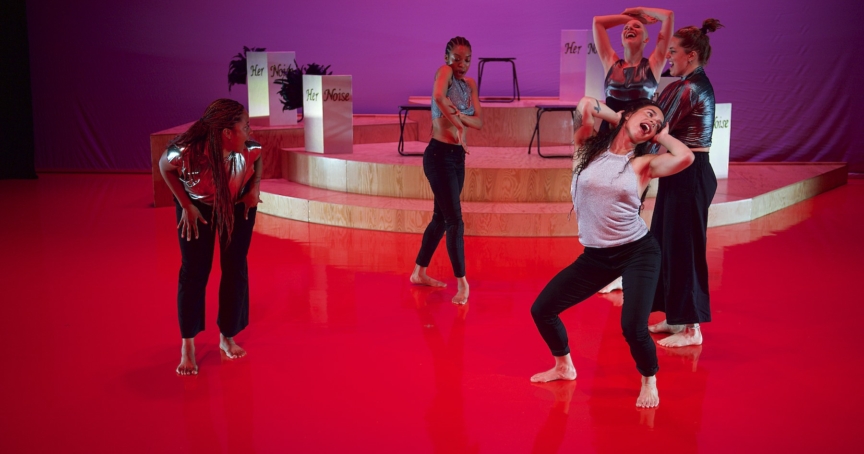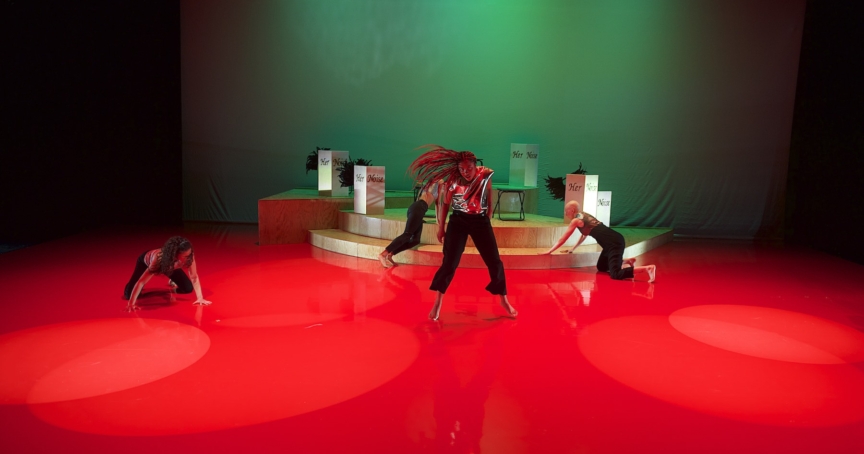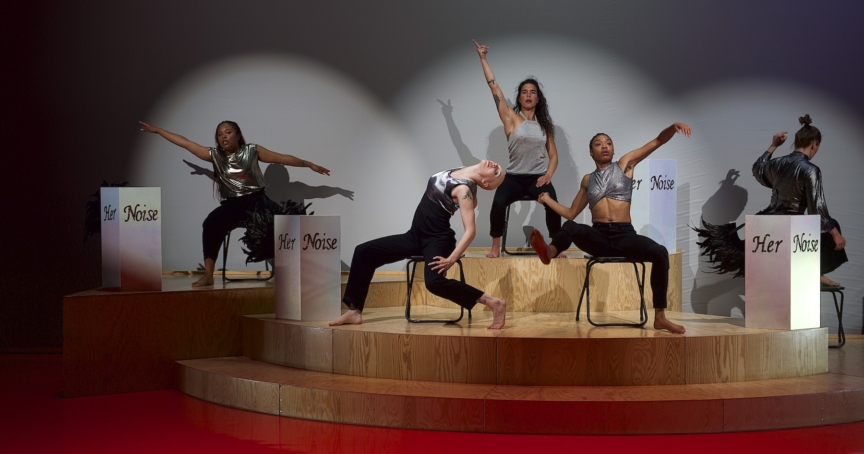Her Noise
An interdisciplinary collaboration with the Dortmund Opera and WUK performing arts
2020
about the piece
Although we live in a highly visual culture, human voices fascinate us in so many ways because the pitch of people’s voices reveals so much about them. The voice is what makes us stand out. And it also simultaneously reminds us that perceptions are relative. The simple truth of voices without the mediation of articulated language, communicates the elementary realities of existence: singularity, relationality, gender difference and age. However, despite our uniqueness, there are many voices, who are not heard or listened to. Women in particular are often overheard or their speech referred to as “noise”, ostensibly unbearable (for men) to listen to.
History is full of examples of the ambivalence with which our society views female voices. From Homer’s sirens to H.C. Andersen’s mermaid, from Kant’s remarks about the frivolous chatter of women in the next room to the female voices of electronic devices, the attitude is clearly one that considers the female voice to be a danger to society. Not so long ago, Hillary Clinton’s voice was described as entering the ear ‘like an ice pick’, while also being accused of ‘making angels cry’. Michelle Obama was criticized both for ‘talking like a white girl’ and for being ‘too loud, too angry, or too emasculating’. As anachronistic as these statements may be, they are part of our social reality. Women who raise their “voices” are exposed to latent threats. A simple glance at various social media comment sections makes this amply clear.
This problem has numerous consequences. For example, studies have shown that female voices in general have deepened over the last years. The vocal range of women in management positions tends to become more similar to men’s over time. In contrast, we see and hear a broad spectrum of performative female voices in concert and performance. Despite the social ambivalence, many artists choose to conquer spaces along the aesthetic fringes and surprise us with unusual access to vocal material.
Against this backdrop, the project “Her Noise” deals with different aspects of female voices to create a choreographic concert. We are looking at pieces of music that specially reference the female voice and its emancipation, such as Pauline Olivero’s “Bye Bye Butterfly”, as we attempt to find physical expression for it. Furthermore, we have invited four artists, who deal with voice and noise in their own practices.
Lucrecia Dalt, Stine Janvin, Colin Self and Lena Wicke – Aengenheyster (Monster Woman) will be contributing aspects of their own working methods to the rehearsal process as well as developing musical material together with the dancers of the company. The dancers will record this material and add their own. In this form, the piece will evolve out of a process of shared authorship.
The performance combines musical parts with various performative scenes to reflect on the potential of female voices.
videos
Teaser 2022
Teaser 2021
credits
Concept: Christoph Winkler | By and With: Bria Bacon, Symara Johnson, Lisa Rykena, Sophie Prins, Sarina Egan-Sitinjak | Musical collaboration: Lucrecia Dalt, Stine Janvin, Lena Wicke-Aengenheyster, Colin Self | Technical Direction: Fabian Eichner | Stage Design: Valentina Primavera | Graphic and Video: Gabriella Fiore Production Management: Laura Biagioni
An interdisciplinary collaboration of the Company Christoph Winkler with the Dortmund Opera and the cultural center WUK performing arts Vienna.
Supported by the Fonds Doppelpass of the German Federal Cultural Foundation.
dates
-
29. - 30. - 31. December 2022Radialsystem - BerlinPremiere in Berlin
Th. 29.12 at 8:00 pm Premiere
Fr. 30.12 8:00 pm
Sa. 31.12 7:00 pm -
10. - 11. June 2022WUK performing arts - Wien
-
01. June 2022Theater Dortmund - Dortmund
-
29. - 31. December 2021Radialsystem - Berlin
reviews
The multifaceted richness of female voices
The performance "Her Noise" by the Company Christoph Winkler celebrates its Berlin premiere at the Radialsystem
Christoph Winkler is a man who looks and listens closely - to how people treat each other, how they talk about each other. So it did not escape him that Hillary Clinton's voice in the US election campaign against Donald Trump was once described as an "ice pick in the ear canal" and that she was said to make angels cry with it. He also noted that Michelle Obama was criticised both for "speaking like a white girl" and for being "too loud, too angry or even emasculating". These are statements that attracted Winkler to artistic engagement. "Because as anachronistic as these statements may be, they are part of our social reality," says the 55-year-old, who is considered one of Germany's most versatile choreographers. The fact that women's speech is often referred to as "noise" inspired him to create a choreographic concert about the power and multifacetedness of female voices. Her Noise" by the Christoph Winkler Company will celebrate its Berlin premiere at the Radialsystem at the end of December. Actually, the performance was supposed to premiere there in December 2021, but due to a pandemic, nothing came of it. And so "Her Noise" will now be seen and heard there with a year's delay, after the piece was already performed in Dortmund and Vienna this summer. It was well received by audiences there, says Winkler, who is now looking forward to a musically open-minded Berlin dance theatre audience. Her Noise" was created in collaboration with the artists Lucrecia Dalt, Stine Janvin, Colin Self and Lena Wicke-Aengenheyster. All four are "experts in musical work with voices", says Winkler. He invited them to work with the dancers in his company in four workshops on the topic of the female voice. "Very quickly, many small sketches emerged," says the choreographer - sequences with four different handwritings, which he then combined into a musical and dance collage.
A wide range of musical material
On the one hand, he and his dancers chose pieces of music for "Her Noise" that refer to the female voice and its emancipation - like Pauline Olivero's "Bye Bye Butterfly" - and tried to find a physical expression for them, Winkler explains. On the other hand, there are the tracks of the four female experts and the compositions that were newly created during the workshops. This mix is supplemented by a medley of women's songs from the Middle Ages. All in all, a wide range of musical material, some of which is played on stage as a cappella vocals from the tape, and some of which is performed by the five dancers themselves. "Dancers using their voices is quite en vogue right now," says Christoph Winkler. And that is to be expected, he adds, throwing the keyword Triple Thread into the room - which describes a performer who is talented in three different areas, who can dance, sing and act.
What the perception of the voice reveals about us
What would he himself describe "Her Noise" as? Winkler thinks for a moment and laughs: "As a good play in which there is a lot of dancing and a lot of singing." And that with different approaches to dealing with voice from rap, which comes from hip-hop culture, to voice performance. The fact that "Her Noise" has just been seen in Dortmund and Vienna before the piece comes to Berlin is no coincidence, by the way. Together with the Dortmund Opera and the independent Viennese production house WUK performing arts, Christoph Winkler's dance company has already realised the performance "The Voice That You Are" in the 2018/19 season - as a funded Doppelpass project. With its Doppelpass fund, the Federal Cultural Foundation supports cooperations between independent groups and dance and theatre houses. "Her Noise" is the logical development of "The Voice", says Winkler. While the first piece was about the human voice in general, the focus is now specifically on the female voice. In his view, this is an enormously exciting topic. "History is full of examples of the ambivalence with which our society confronts female voices," says the choreographer and gives examples: "From Homer's sirens to Andersen's mermaid and Kant's remarks about the frivolous chatter of women in the next room to female voices of electronic devices, an attitude emerges that obviously sees the female voice as a danger to the social order."
Katrin Starke Berliner Morgenpost / Berliner Bühnen





